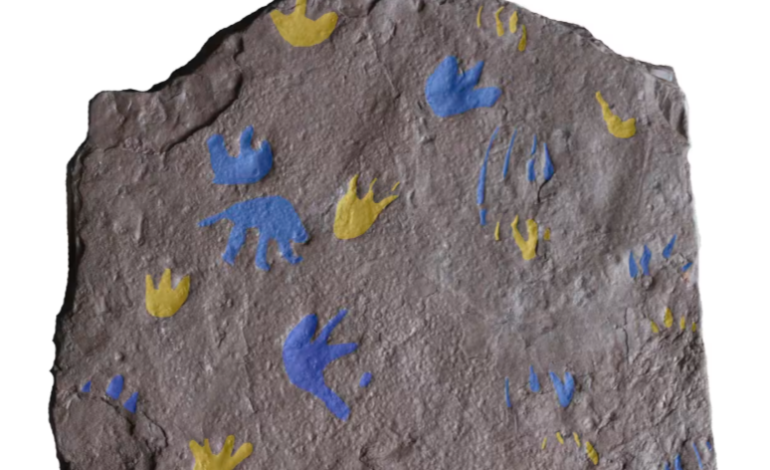Ancient Footprints Suggest Land-Dwelling Vertebrates Evolved Earlier Than Thought

A set of fossilized footprints discovered in Australia is challenging long-standing beliefs about the timeline of vertebrate evolution on land.
Dating back approximately 350 million years, the tracks are now considered the oldest known evidence of a reptile-like animal capable of living entirely on land, pushing back previous estimates by at least 35 million years.
The findings, published in Nature, indicate that animals adapted to terrestrial life much earlier than scientists previously believed. The footprints—unearthed from a slab of sandstone in Victoria, Australia—display distinct features such as long toes and hooked claws, traits associated with modern monitor lizards and other fully land-dwelling creatures.
“This is the earliest evidence we’ve ever seen of an animal with claws,” said Stuart Sumida, a paleontologist at California State University who was not involved in the research. “We had thought the transition from fin to limb took much longer.”
Clawed limbs are a defining characteristic of amniotes—the group that includes reptiles, birds, and mammals—which evolved to live independently of water. Unlike fish and amphibians, amniotes developed the ability to lay eggs on land, marking a critical step in vertebrate evolution. The presence of claws in these newly discovered tracks suggests the animal was not amphibious but fully adapted to a land-based lifestyle.
The fossil trackways provide a vivid glimpse into a moment in time. Researchers believe the sandstone slab captures a sequence of events that occurred over a single day: one animal walked across the soft ground, followed by a brief rain shower, after which two others crossed in the opposite direction. As the ground dried and was later covered in sediment, their movements were preserved in stone.
“Trackways are beautiful because they tell you how something lived, not just what something looked like,” said John Long, a paleontologist at Flinders University and co-author of the study.
The footprints belong to what researchers describe as a primitive sauropsid—a reptile-like ancestor that predates even the earliest known body fossils of amniotes. Until now, the oldest such fossils were dated to about 318 million years ago and found in Canada. These new tracks, dated to the early Carboniferous period, suggest the amniote lineage originated much earlier, possibly as far back as the late Devonian.
Per Ahlberg, a co-author and paleontologist at Uppsala University in Sweden, emphasized the significance of the claws:
“Only animals that evolved to live solely on land ever developed claws. This find shows that such adaptations happened far earlier than we expected.”
At the time these creatures roamed what is now southeastern Australia, the region was a humid, forested part of the supercontinent Gondwana. The environmental context supports the idea that early land vertebrates thrived in lush, tropical ecosystems.
The discovery has implications beyond shifting a timeline—it may signal that the fossil record from this period is more incomplete than previously recognized. The study proposes that many key evolutionary developments occurred in the Devonian period but remain undocumented due to gaps in available fossils.









The latest news in your social feeds
Subscribe to our social media platforms to stay tuned